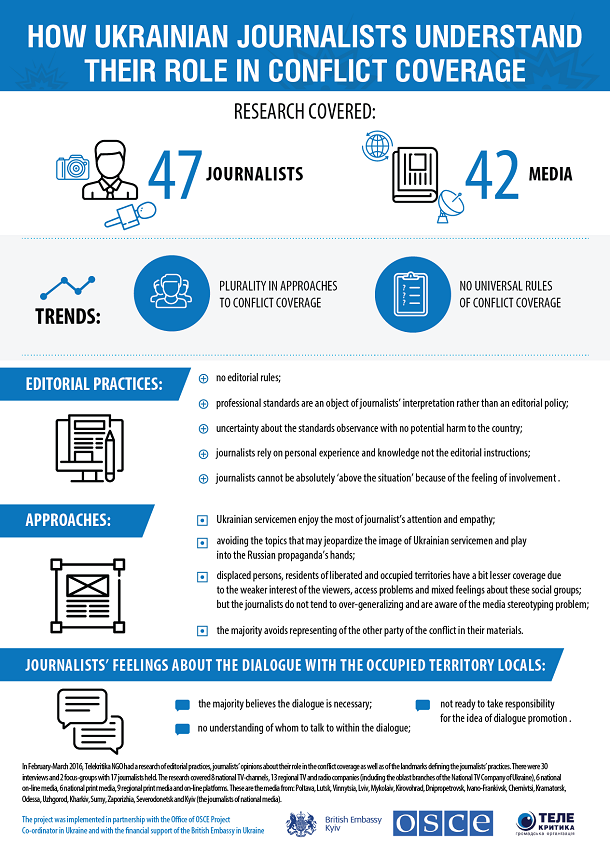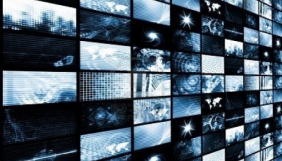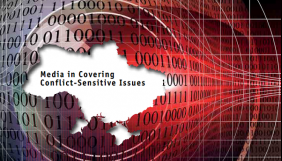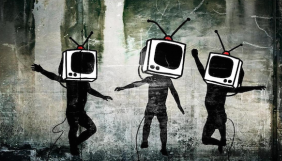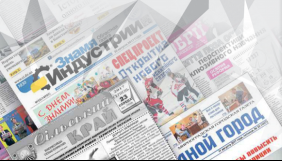
Coverage of the conflict in the east by Ukrainian media: study of journalists’ values, attitudes and practices (research findings)
Coverage of the conflict in the east by Ukrainian media: study of journalists’ values, attitudes and practices (research findings)
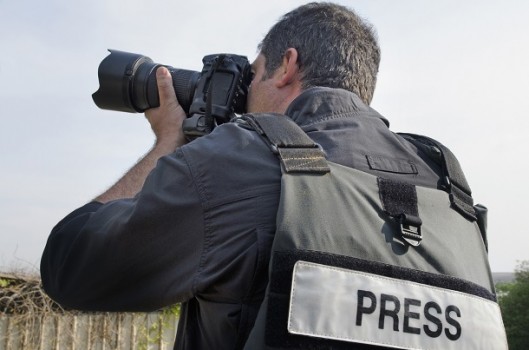

“We decided to have a research after the monitoring of Ukrainian channels’ news and talk-shows (20 regional and 7 central channels) in November-December in terms of coverage of different social groups affected by the conflict. The monitoring has shown that the journalists are often the conflict source so we decided to ask them about editorial practices, why they choose this or that topic, what motives lie beneath the conflict coverage as well as conflict-related topics,” Diana Dutsyk, the executive director of Telekritika NGO, explained at the Student Media Symposium (SMS) 2016 in Lviv when presenting the research findings.
The research purpose:
- To find out the journalist’s vision of their role in the conflict and related topics coverage;
- To identify their attitudes and motives lying beneath their work in the conflict;
- To identify what editorial practices and standards of conflict-related topics coverage are popular among the Ukrainian media.
There were 30 interviews and 2 focus-groups with 17 journalists held. Though the research is not representative, the journalists were selected in such a way to have the widest possible representation of different media types and regions. Thus, 47 journalists and editors involved in the research represented 16 oblasts and Kyiv and 42 media.
The research covered 8 national TV-channels, 13 regional TV and radio companies (including the oblast branches of the National TV Company of Ukraine), 6 national on-line media, 6 national print media, 9 regional print media and on-line platforms. These are the media from: Poltava, Lutsk, Vinnytsia, Lviv, Mykolaiv, Kirovohrad, Dnipropetrovsk, Ivano-Frankivsk, Chernivtsi, Kramatorsk, Odessa, Uzhgorod, Kharkiv, Sumy, Zaporizhia, Severodonetsk and Kyiv (the journalists of national media).
Conclusions
- Ukrainian media have the plurality in approaches and editorial policies for conflict coverage, and the high uncertainty about the professional landmarks is observed; this means that the Ukrainian journalist community has not developed any universal rules yet and the journalists are searching for professional landmarks.
- The institutionalization of conflict-related topics coverage editorial practices is deficient in the Ukrainian media. Consequently, the journalists are more prone to use their own experience and views rather than the established editorial practices and standards.
- The personal factor, i.e. the efforts of certain journalists (many of them originate from Donbas and Crimea) who understand well the problem context, often go to the conflict area and raise important questions, is a significant drive for Ukrainian media’s agenda about the conflict-related topics.
- The journalists are unanimous about the understanding of the conflict topic importance however the most of them see that the viewers become less interested in these topics due to the accumulated fatigue and relative calming in the ATO zone, so the intensity of media c`age drops.
- Ukrainian servicemen enjoy the most intense media coverage as compared to other social groups, their stories are the most interesting for the viewers, the most important for the society and the most dramatic. So here we observe the empathy of journalists who are in close contact with the military and support them.
- The stories about displaced persons, residents of liberated and occupied territories, according to the journalists, have a bit lesser coverage due to weaker interest of the viewers, lack of media resources, access problems. Moreover, the journalists have mixed feelings about these social groups as compared to the feelings about the military. Anyway, globally speaking, the journalists do not tend to over-generalizing and are aware about the media stereotyping problems.
- The emotional tension following the conflict coverage and the feeling of involvement have had their effect on the journalists’ reconsideration of their professional role in conflict. The majority of journalists believe that they cannot be absolutely ‘above the situation’, though many of them do understand the risks of such position.
- The professional standards issues when covering the conflict-related topics are not clearly set out in the most of editorial boards. So quite often they are an object of journalists’ interpretation rather than an editorial policy.
- By and large, the Ukrainian media environment has got the understanding of the framework role of the fairness and balance standards but in conflict the journalists feel uncertain if it is possible to observe these standards with no potential harm to the country. So the most Ukrainian media are more or less deliberate when ‘switching off’ the representation of the other party in their materials about the conflict. At the same time, there is a group of journalists that bring up the absence of the other party in the media discourse.
- In fact, the journalists believe that they are free enough to cover the conflict-related topics (especially as compared to the political issues) though some of them experience the editorial pressure, the social pressure and are aware of possible self-censorship. In particular, this is about the avoidance of the topics that may jeopardize the image of Ukrainian servicemen and play into the Russian propaganda’s hands.
- The conflict coverage is strongly influenced by the direct operation in the conflict area and context understanding. The journalists that have an opportunity to go to the conflict area often and have established the network there and the ones that had more contacts with the region before the conflict show more complex attitude to the situation and deeper understanding of nuances. While the journalists covering the conflict topics from the office and are far from the site tend to have simpler understanding of the situation.
- Most journalists support the idea of dialogue but they do not have any understanding with whom exactly this dialogue is possible. They believe that the media hardly raise the issue of dialogue because there is no clearly expressed governmental policy about the future of occupied territories and locals. Given this, the majority of journalists are not ready to shoulder responsibility for the idea of dialogue promotion though they are open to cover such a dialogue.
